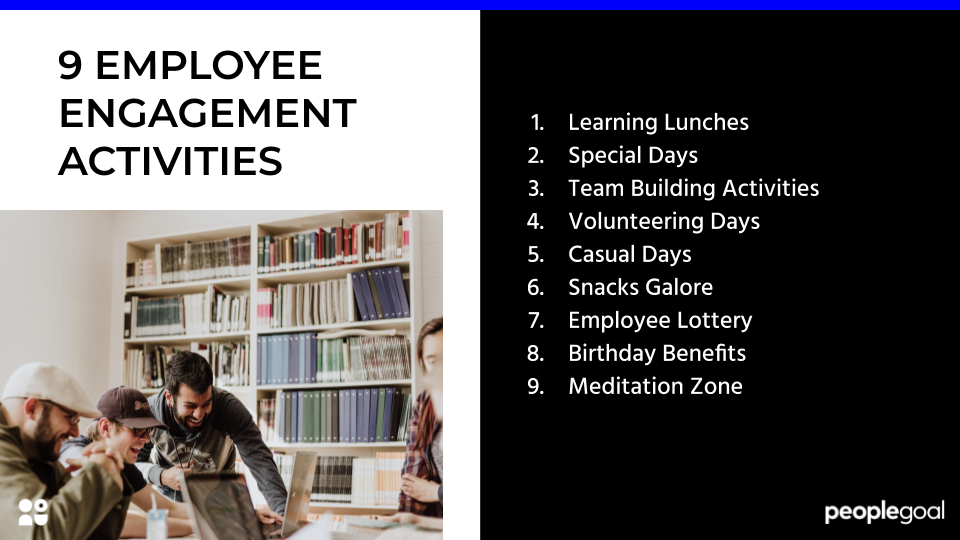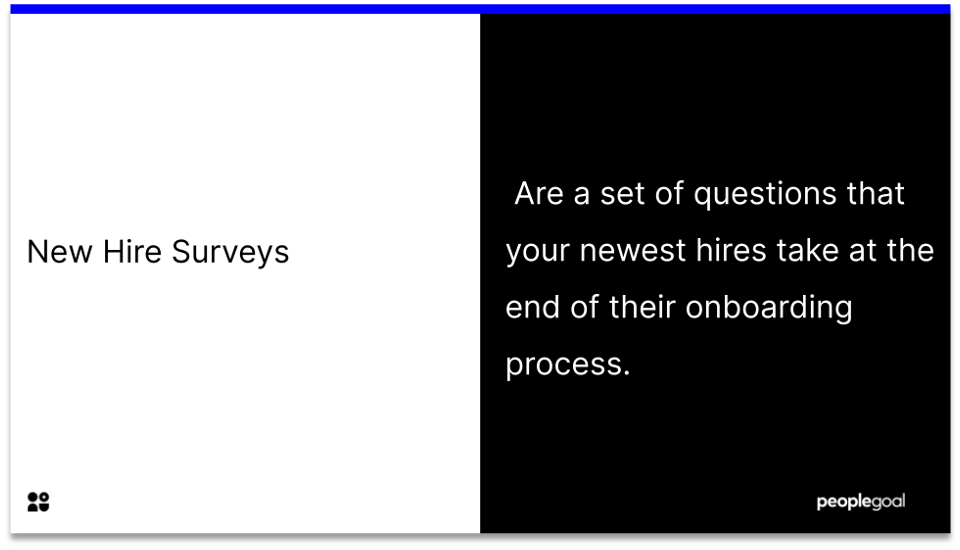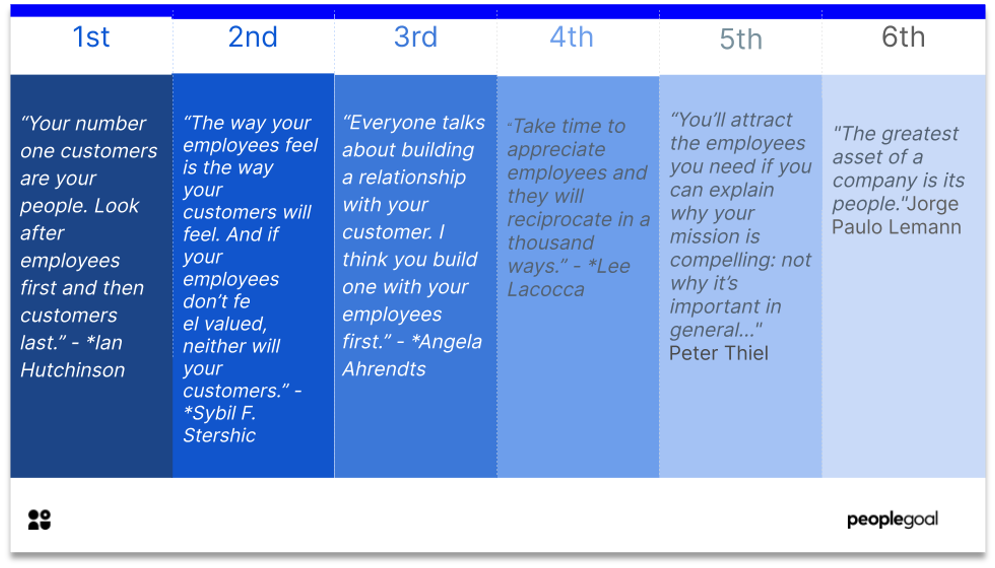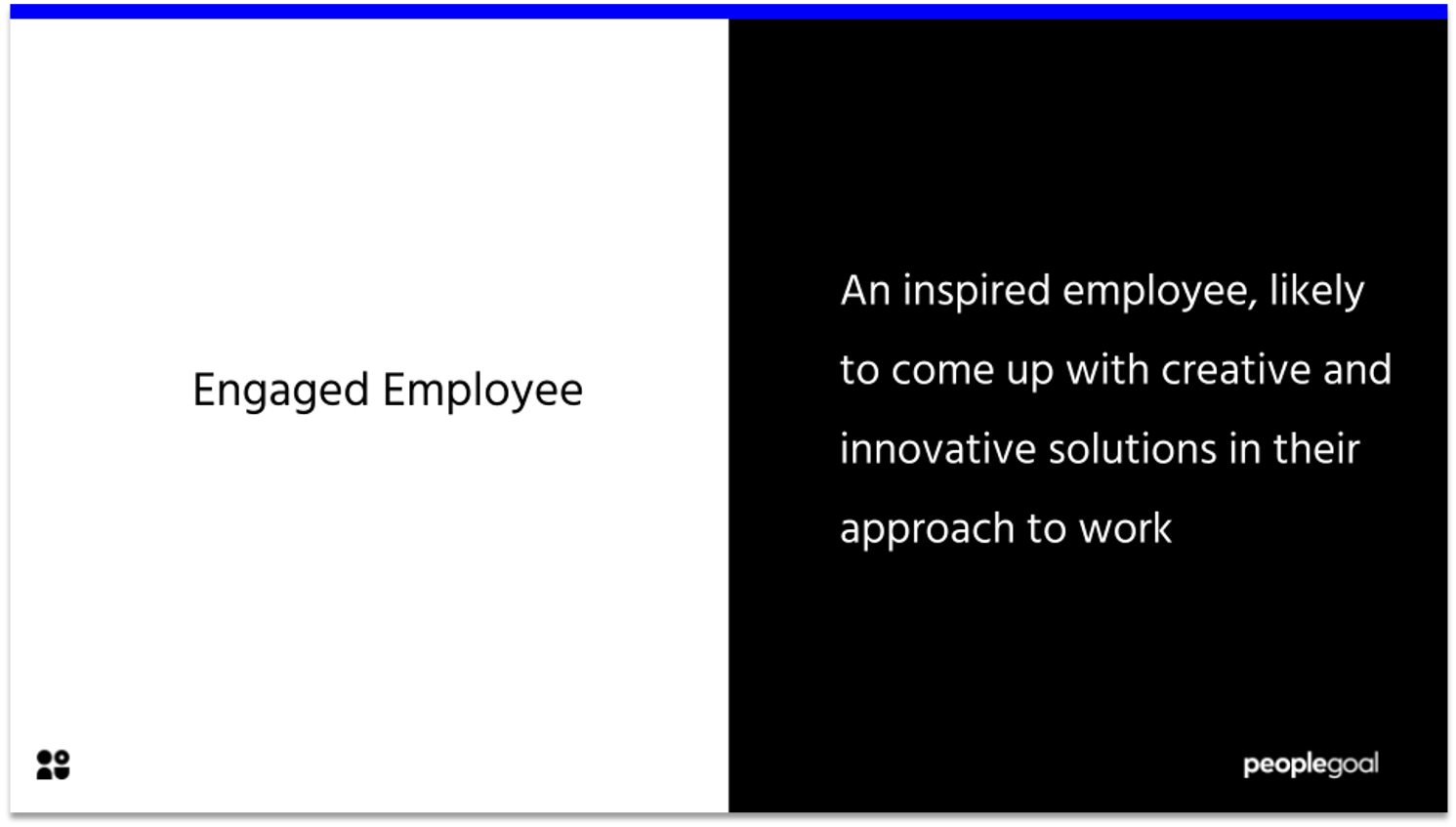The employee net promoter score started as a customer survey. In 2003, Satmetrix Systems inc. and Fred Reichheld (a Bain & Company consultant), introduced the net promoter score. Since then companies use the Net Promoter Score to gauge customer’s enthusiasm about their product. They ask the million-dollar question:
Would you recommend this product to your family and friends?
Through this, companies can see a snapshot of the popularity of their product. We only recommend products that are truly useful or meaningful to ourselves and others.
In recent years, HR leaders have adapted the NPS to create an eNPS – employee net promoter score.
This is a measure of employee engagement and employee experience – asking instead :
Would you recommend this company as a place of work?
Employees who would recommend working at a company enjoy working there and believe the benefits outweigh its negatives. A high score is a positive reflection of HR’s practices.
This provides a benchmark for employee engagement across the company, and while not perfect, can be a useful starting point for HR.
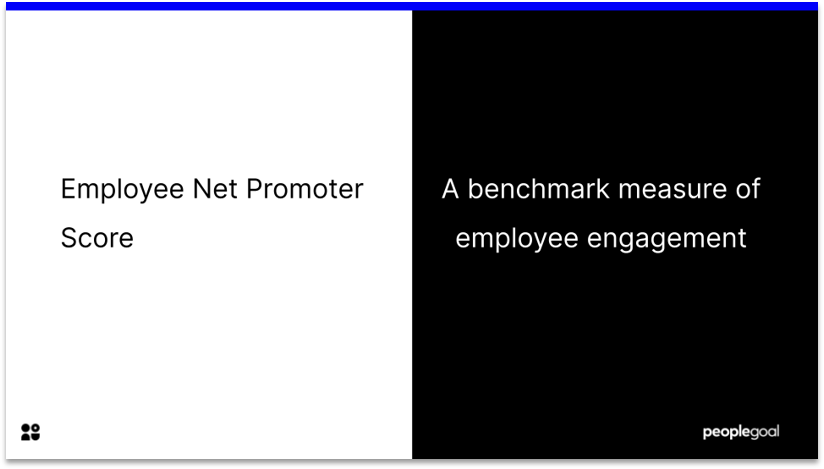
Why does employee engagement matter?
Engagement is the level of commitment an employee feels for their company. Rather than working for a pay cheque, engaged employees are committed to a company’s goals.
Leaders are beginning to see that engagement is crucial to the success of a company – to business outcomes, employee wellbeing, productivity and so much more.
Troublingly, according to Gallup, 52% of workers were not engaged at work in 2019.
It’s really important for HR to employ a number of measures to check the temperature on employee engagement – an eNPS is a great way to do that.
What is an Employee Net Promoter Score?
Employee net promoter score is a scoring system by which employees rate their satisfaction with an organization.
eNPS is a very simple measure – which is perhaps one of its limitations! It asks employees how likely they are to recommend the organization to someone looking for work.
After this, include a follow-up question which provides the employee a chance to put their rating into context.
Ratings are on a scale of 1-10. The responses are divided into ‘Promoters’, ‘Neutrals’ and ‘Detractors’.
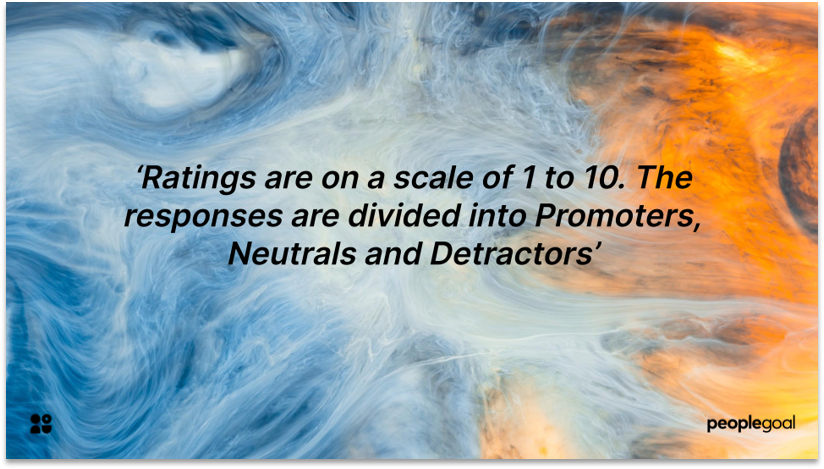
Below is a guide to each of the different promoter scores.
Promoters
- Scores 9 or 10. Congratulations, these employees are very engaged!
- Your work is not done – HR must use other survey types to investigate which strategies in particular are working, and what makes working at the organization so fulfilling.
Neutrals
- Scores 7 or 8. This is an important group. They are somewhat engaged at work, but there is more that needs to be done to improve their experience.
- Solutions are more actionable for those in the Neutral group – as they are overall satisfied, but may need attention in a particular area
- Run surveys and pay attention to any environmental factors that can be remedied – e.g., a lack of resources, an interest in greater work flexibility.
- Often small changes can turn Neutral employee responses into Promoters.
Detractors
- Scores 0-6. Unfortunately, these employees are unlikely to be adequately engaged.
- Use further surveys to discover the underlying causes here. Ensure this group knows their voices are being heard.
How to calculate eNPS?
Calculating eNPS is refreshingly easy – as usually surveys involve only one or two questions.
Calculate the percentage of detractors and promoters. Subtract the percentage of detractors from the percentage of promoters.
This will give you your company’s eNPS score.
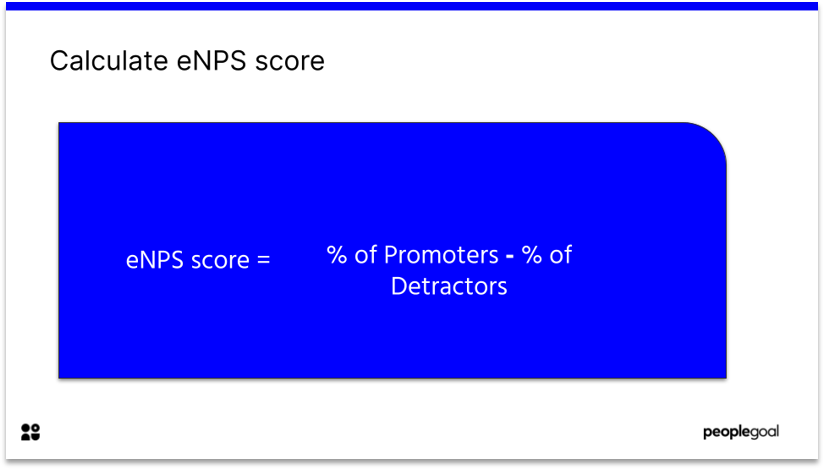
Limitations of eNPS
eNPS is not a perfect rating – beware that it can only provide a ballpark figure of your company’s level of employee engagement.
Take eNPS ratings with a pinch of salt. Just because someone is willing to recommend the company to a friend does not mean that it necessarily works for them personally.
Furthermore, a recommendation alone does not equate to full engagement. Employee engagement is multi- layered – feedback, purpose and community all effect it. HR needs a multi-pronged attack to measure the drivers of engagement.
Ways to use eNPS more effectively
However, eNPS when used correctly, can be an invaluable benchmark.
Improve your findings by asking a supplementary question after the first eNPS question. This clarifies which areas of engagement are lacking.
For Promoters, ask:
What is it that makes you want to recommend the company?
For Neutral responses, ask:
Are there specific changes that would improve your experience? If not, what areas could be improved more widely?
For Detractors, ask:
What can we do to improve your experience?
If there are any factors that can be immediately changed – for example, scheduling more one-on-one meetings, action this first.
Track any trends in your data to uncover underlying problems.
Supplement your survey with further, more targeted surveys, for example an Employee Engagement survey.
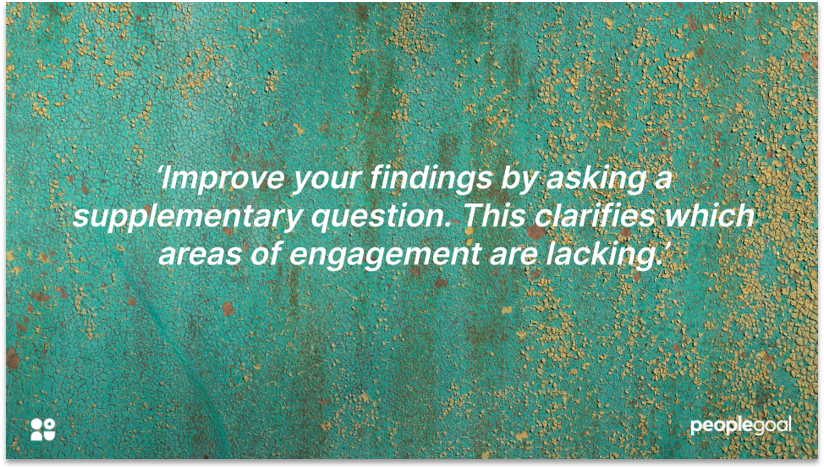
How often should you take this type of survey?
The reason employee net promoter score surveys are so widely used is that their participation rate is an HR dream. They are short and sweet, unlike more detailed surveys which can be off-putting for busy employees.
This means you can undertake them more regularly, for example every 3 months. Some companies only conduct an eNPS survey twice a year.
The more regularly you do them, the more data you will have at your fingertips to track changes in employee engagement across time.
You’ll be able to see, for example, if a particular HR initiative in June was matched with higher engagement.
Employee net promoter scores: a glimpse into engagement
Employee net promoter scores are great starting point for improving employee engagement and are crucial to employee engagement surveys.
They can provide a wide angle view of employee sentiment, helping you to measure the effectiveness of human resources strategies.
To learn more about analyzing survey results, read this blogpost on Interpreting Employee Survey Data.
If you’d like to know how PeopleGoal’s Survey apps can improve your people processes, why not book a demo today?
Ready to 3x Your Teams' Performance?
Use the best performance management software to align goals, track progress, and boost employee engagement.

